S is for steel: Piaget revisits a 1970s design great
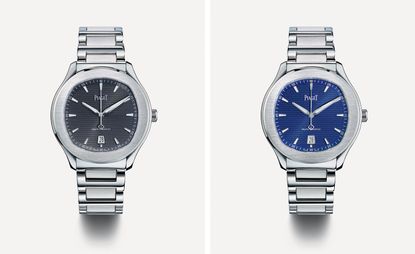
The original Piaget Polo was a chic, high-society calling card, worn by the likes of Roger Moore and Andy Warhol. The fine, gold bracelet had a recurring step motif that ran seamlessly through the dial and case, prompting Yves Piaget to call it a ‘watch bracelet, rather than a mere wristwatch’. It was unashamedly elitist.
The new iteration, the Polo S is unashamedly less so. Even the name tells you that – the ‘S’ stands for steel. The Piaget S is the first steel watch Piaget has introduced in 15 years, and one of only a handful in its 170-odd year history. As such, Piaget CEO Philippe Léopold-Metzger has declared the Polo S a watch for ‘a new generation’ of consumers. The point is, it’s a fine watch at a more achievable price point and retails at under £10,000.
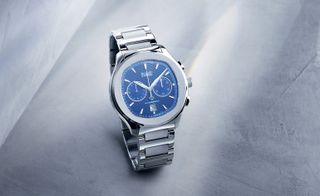
There are blue or white dial variants, although the anthracite-grey is the pick, while the chronograph version is only available in white or blue
The watch world has excellent form when it comes to creating fine timepieces in steel rather than more expected precious metals, such as gold. Audemars Piguet broke the mold when it launched the Royal Oak to a bemused Baselworld audience in 1972. Designed by the late, great Gérald Genta, careful finishing was key to giving the humble material a luxurious, precious touch. Patek Philippe’s benchmark steel model, the Nautilus, also designed by Genta, followed in 1976. While this year, Vacheron Constantin launched its handsome Overseas model in steel.
So, how does Piaget’s new Polo S fit into the story? Aesthetically, it is convincing, albeit bearing little resemblance to the original Polo. The stepped look has been reduced to a much finer horizontal graining on the dial, and the bracelet is no longer seamlessly integrated into the case. There are blue or white dial variants, although the anthracite-grey is the pick, while oddly, the chronograph version (£11,500) is only available in white or blue. Both the time-only and chronograph models are powered by in-house Piaget movements.
Will it be enough to convince the next generation of watch buyers? In design terms, the 1970s echo is still audible, thanks to the way its case slips fluidly into the lugs, while the combination of a round bezel within a ‘TV-screen’ dial gives it current appeal. Depending on your material preference, it’s really just a matter of taste.
INFORMATION
For more information, visit the Piaget Polo website
Wallpaper* Newsletter
Receive our daily digest of inspiration, escapism and design stories from around the world direct to your inbox
-
 Technogym Home Bench 40 ways: designers interpret the home exercise classic
Technogym Home Bench 40 ways: designers interpret the home exercise classicTechnogym marks its 40 anniversary with 40 special editions of its Home Bench created in collaboration with international creatives
By Rosa Bertoli Published
-
 AHEC presents new works in American maple as part of the Wallpaper* Class of ’24
AHEC presents new works in American maple as part of the Wallpaper* Class of ’24The American Hardwood Export Council takes part in the Wallpaper* Class of ’24 exhibition at Triennale Milano during Salone del Mobile (16-21 April 2024), presenting new pieces by Parti and Giles Tettey Nartey in American hard maple
By Rosa Bertoli Published
-
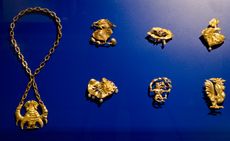 Paris’s Musée des Arts Décoratifs celebrates avant-garde jewellery design
Paris’s Musée des Arts Décoratifs celebrates avant-garde jewellery design'Fashion, Design, Jewellery Exhibit' is the new transdisciplinary exhibition at Paris’s Musée des Arts Décoratifs
By Minako Norimatsu Published
-
 Classic watch designs to last a lifetime
Classic watch designs to last a lifetimeWhen considering which watch design to invest in, disregard trends and consider classic pieces characterised by timeless design
By Hannah Silver Last updated
-
 Browns and Mad Paris rethink Audemars Piguet Royal Oak
Browns and Mad Paris rethink Audemars Piguet Royal OakWatch customisation specialist Mad Paris has developed two new versions of the Audemars Piguet Royal Oak for Browns
By Hannah Silver Last updated
-
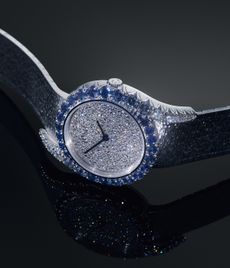 Piaget’s glittering watch is a high jewellery showstopper
Piaget’s glittering watch is a high jewellery showstopperPiaget Limelight Gala Precious Sunrise is cast in bridal-friendly soft shades
By Hannah Silver Last updated
-
 Time for an eco-friendly watch?
Time for an eco-friendly watch?Some of the more eco-friendly watch materials being embraced by sustainably-minded watchmakers include recycled steel, bioceramic and cork
By Hannah Silver Last updated
-
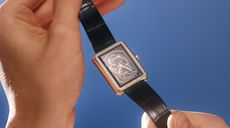 Boundary-breaking Chanel watch is tweaked for a new generation
Boundary-breaking Chanel watch is tweaked for a new generationThe Boy.Friend Skeleton appeals to both men and women with its distinctive octagonal silhouette
By Hannah Silver Last updated
-
 On the button: Chanel's perfectly hidden timepiece
On the button: Chanel's perfectly hidden timepieceThe ‘Mademoiselle Privé Bouton’ watch is everything but off the cuff
By Hannah Silver Last updated
-
 Sound bite: Jaeger-LeCoultre’s contemporary art celebrates acoustic watches
Sound bite: Jaeger-LeCoultre’s contemporary art celebrates acoustic watchesJaeger-LeCoultre and Swiss artist Zimoun have collaborated on an artwork to commemorate the 150 year anniversary of its first minute repeater
By Hannah Silver Last updated
-
 Kengo Kuma’s studio for Grand Seiko sits in the shadow of Mount Iwate
Kengo Kuma’s studio for Grand Seiko sits in the shadow of Mount IwateThe Grand Seiko Studio Shizukuishi takes the natural world as its inspiration
By Hannah Silver Last updated